The document clearly states that the assessment is carried out in a unified and synchronous manner, ensuring democracy, science, fairness, objectivity, rationality, humanity, non-formality, within the correct authority, publicly, transparently and in accordance with the provisions of law.
Officers of the Department of Ethnic Minorities and Religion self-assess their capacity according to prescribed criteria.
The subjects of application are cadres, civil servants, public employees and workers who are subjects of application according to Decree No. 178/2024/ND-CP and Decree No. 67/2025/ND-CP under the management scope of agencies, organizations and units in the province.
The assessment is carried out according to the criteria, scored on a 100-point scale based on the results of performing tasks in the last 3 years (in case the cadre, civil servant, public employee, or employee is transferred to a new agency or unit and has worked for less than 3 years, the new agency or unit must obtain the assessment opinion of the old agency or unit according to the criteria issued by the new agency or unit. In case the civil servant, public employee, or employee is newly recruited or has signed a work contract at the agency or unit for less than 3 years, the assessment is based on the actual time the civil servant, public employee, or employee has worked at the agency or unit).
The total score for each cadre, civil servant, public employee, and worker is arranged in order from high to low, to serve as the basis for selecting and determining who will quit.
Specifically: Group of criteria for evaluating moral qualities, sense of responsibility, sense of discipline, and order in performing tasks and public duties of cadres, civil servants, public employees, and workers (20 points). Group of criteria for evaluating professional and technical competence; ability to meet requirements on progress, time, and quality of performing regular and ad hoc tasks and public duties (40 points).
Group of evaluation criteria on results and work products associated with the functions and tasks of the agency, organization, unit that cadres, civil servants, public employees and workers have achieved (25 points). For cadres, civil servants and public employees, they are evaluated as people with outstanding qualities and abilities, creativity, daring to think, daring to do, daring to take responsibility for the common good and having typical, outstanding achievements, bringing benefits to the agency, organization, unit (15 points). Subjects with evaluation results of 90 points or more.
Resolving early retirement or resignation for cases with voluntary applications must be approved by the head of the agency, organization or unit according to regulations. Retaining the job for cases with voluntary applications for early retirement or resignation but being assessed as having outstanding qualities and abilities, daring to think, daring to do, daring to take responsibility for the common good, having exemplary achievements, bringing benefits to the agency, organization or unit.
Based on the assessment results, agencies, organizations and units continue to determine the number of people who need to be considered for streamlining to meet the criteria of reducing at least 20% of the number of cadres, civil servants, public employees and workers according to Central regulations, ensuring the principle of streamlining those with the lowest assessment results from bottom up.
Determine the number of staff to be reduced according to regulations: Based on the number of staff assigned or approved by competent authorities, the number of staff present, agencies and units determine the number of staff to be reduced by 2030 to reach a minimum rate of 20% according to the number of staff assigned in 2025.
About the 4-step evaluation process
Step 1: Cadres, civil servants, public employees, and workers self-evaluate and score according to criteria issued by the agency, organization, or unit, and report to the head of the agency or unit directly managing and employing cadres, civil servants, public employees, and workers.
Step 2: The head of the agency, organization, or unit directly managing and using cadres, civil servants, public employees, and workers organizes to collect collective leadership opinions to evaluate and score each cadre, civil servant, public employee, and worker according to the issued criteria; reports to the head of the agency or unit with the authority to evaluate cadres, civil servants, and public employees (according to the hierarchy of cadre, civil servant, and public employee management) for consideration and decision on the evaluation of cadres, civil servants, public employees, and workers.
Step 3: The head of the agency, organization, or unit has the authority to evaluate cadres, civil servants, and public employees according to the hierarchy, and consults with the collective leadership and Party Committee at the same level before deciding to evaluate cadres, civil servants, public employees, and workers according to the issued criteria.
Step 4: Make a list and records of those who have resigned or have their payrolls reduced according to current regulations and report to competent authorities for consideration and decision (For agencies, organizations and units under the Party bloc, the Provincial Vietnam Fatherland Front Committee and socio-political organizations at the provincial and district levels, send them to the Provincial Party Committee's Organization Board for synthesis; for agencies, units and organizations under and directly under the Provincial People's Committee, send them to the Department of Home Affairs for synthesis).
On the basis of this guidance, the Party Committee, government and heads of agencies, organizations and units shall review, adjust and supplement the criteria and scores in the criteria to suit the actual situation and conditions of the agency, organization or unit during the assessment.
At the same time, evaluate cadres, civil servants, public employees, and workers to reorganize the apparatus, streamline the payroll, restructure and improve the quality of cadres, civil servants, and public employees according to regulations to be completed before April 18, 2025.
The collective Party Committee, leaders and heads of agencies, organizations and units are responsible for evaluating and selecting those who have resigned, in conjunction with restructuring and improving the quality of the staff, civil servants and public employees under their management so that the agencies, organizations and units can operate effectively, efficiently and effectively. Ensure the retention and promotion of cadres, civil servants and public employees with outstanding abilities, who dare to think, dare to do, and dare to take responsibility for the common good; conduct the evaluation of cadres, civil servants and public employees to ensure objectivity, transparency and equality.
Attach text
Source: https://baotuyenquang.com.vn/4-buoc-huong-dan-danh-gia-chat-luong-can-bo-cong-chuc-vien-chuc-tren-dia-ban-tinh-209916.html





![[Photo] President Luong Cuong presents the decision to appoint Deputy Head of the Office of the President](https://vphoto.vietnam.vn/thumb/1200x675/vietnam/resource/IMAGE/2025/5/8/501f8ee192f3476ab9f7579c57b423ad)

![[Photo] National Assembly Chairman Tran Thanh Man chairs the meeting of the Subcommittee on Documents of the First National Assembly Party Congress](https://vphoto.vietnam.vn/thumb/1200x675/vietnam/resource/IMAGE/2025/5/8/72b19a73d94a4affab411fd8c87f4f8d)
![[Photo] General Secretary concludes visit to Azerbaijan, departs for visit to Russian Federation](https://vphoto.vietnam.vn/thumb/1200x675/vietnam/resource/IMAGE/2025/5/8/7a135ad280314b66917ad278ce0e26fa)

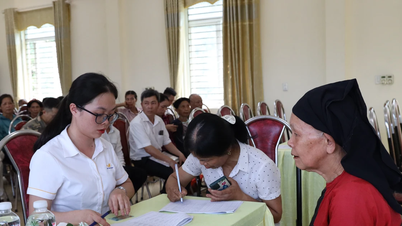







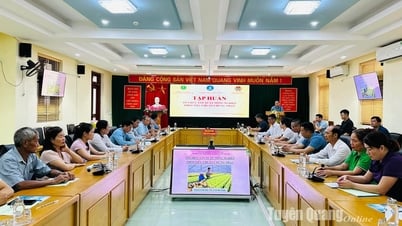
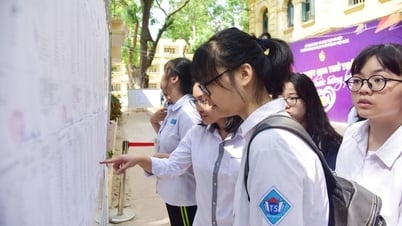



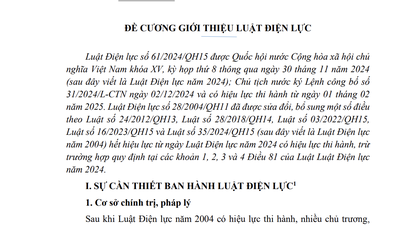
![[Photo] General Secretary To Lam receives leaders of typical Azerbaijani businesses](https://vphoto.vietnam.vn/thumb/1200x675/vietnam/resource/IMAGE/2025/5/8/998af6f177a044b4be0bfbc4858c7fd9)

































![[Photo] Prime Minister Pham Minh Chinh talks on the phone with Singaporean Prime Minister Lawrence Wong](https://vphoto.vietnam.vn/thumb/402x226/vietnam/resource/IMAGE/2025/5/8/e2eab082d9bc4fc4a360b28fa0ab94de)











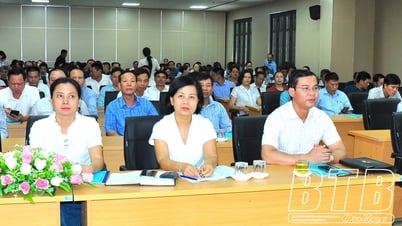


















Comment (0)